#plebejus
Text

Silver-studded Blue (Plebejus argus), family Lycaenidae, Poland
photograph by Igor Czapnik
340 notes
·
View notes
Text
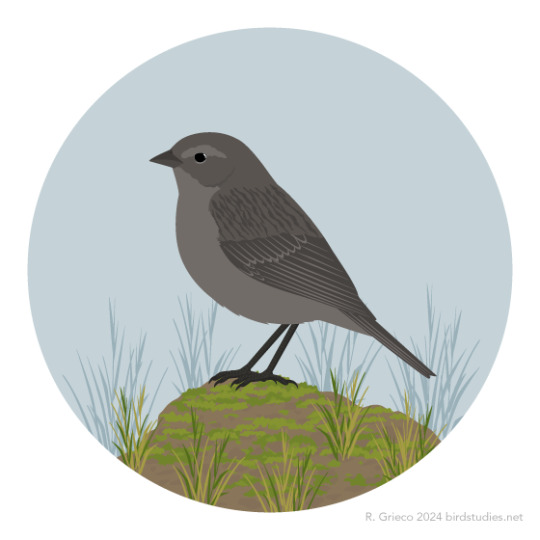
April 26, 2024 - Ash-breasted Sierra Finch (Geospizopsis plebejus)
Found in the Andes from Ecuador to Argentina, these tanagers live in open habitats, including grasslands, bogs, and desert highlands. They eat mostly seeds and some arthropods, foraging in small flocks, sometimes with other species, on the ground. Breeding from October to July, they build messy nests from grass, hair, wool, and feathers in crevices, under eaves, on the ground under large rocks, or in grass clumps or bushes. Females lay clutches of two eggs.
#ash-breasted sierra finch#tanager#geospizopsis plebejus#bird#birds#illustration#art#grassland#birblr art
77 notes
·
View notes
Text
BOTD: Mountain Thrush

Photo: Greg Lasley
"Rather dull-colored large thrush of mountain forests, rarely encountered. Feeds mainly in fruiting trees and bushes, less often on the ground. Both sexes gray-brown overall with a black bill and dark legs."
- eBird
#birds#mountain thrush#birds of north america#north american birds#mountain robin#thrushes#passerines#birds of mexico#birds of central america#birding#birdblr#birblr#bird watching#bird of the day#Turdus plebejus
64 notes
·
View notes
Text

Karner Blue Butterfly (Plebejus melissa samuelis)
Endangered
US, Midwest to New England
threats: development causing loss of the blue lupine flower, on which it depends
#pretty blue!#animal art#conservation#endangered species#insect art#butterfly#karner blue#Plebejus melissa samuelis#insect#usa#north america
35 notes
·
View notes
Text
I need you all to know 🍬 is subscribed to so many taxa on iNaturalist that he's gone through 3 or 4 pages of observations on our dashboard and only managed to get back to the ones from half an hour ago
#personal#thoughts#🦋 post#iNaturalist#he's subscriped to: sphingidae; plebejus melissa; plebejus fridayi; icaricia acmon; icaricia lupini; icaricia shasta;#brephidium exilis; and then just all the UK's lycaenidae observations#he decided he wants to see every sphinx moth in the world and every gossamer-winged butterfly in the UK#and several blue butterfly species from elsewhere
2 notes
·
View notes
Photo

A new variant has been added!
Mountain Thrush (Turdus plebejus)
© Ad Konings
It hatches from black, brown, colored, dark, dull, faint, female, large, overall, same, and yellowish eggs.
squawkoverflow - the ultimate bird collecting game
🥚 hatch ❤️ collect 🤝 connect
6 notes
·
View notes
Text

#Reverdin's Blue#Plebejus argyrognomon Canon 400D EF 100 2.8 F/4 1/320 iso: 200 Srbsko#CZ#savebutterflies#butterflies#macro#macrophotography#Lepidoptera#insect#insectphotography
1 note
·
View note
Text
results of a quest to identify the cicada in dnp’s rodent boy summer instagram post
[video: an audio comparison of dan howell's mediterranean cicada imitation and two real cicada species from the med]
abstract: following a perceived dearth of interest in the cicada latched onto the wall in one photo of the ten in dan and phil’s most recent joint vacation instagram post, the authors of this post (buskingalbatross and an anon who instigated this quest) have endeavored to determine its identity at the species level. using resources such as naturalism networking site iNaturalist, various scientific research articles, a databank of Mediterranean cicada song audio files, and Dan’s imitation of cicada screams in the AmazingPhil video “How Phil Nearly Died,” we have concluded that the cicada is most likely an East Aegean cicada (Cicada mordoganensis). obtaining these results would have been impossible had we not received assistance from @/bitchslapblastoids, who generously provided the herein unnamed geographical location* of dan and phil’s summer rat and relaxation destination. I would also like to thank @/pierogish for providing feedback on comparisons of cicada audio files with Dan’s cicada noises.

[image: the individual in question]
methods, results, and conclusions below the cut.
*the authors of this tumblr post would like to flaunt their scientific achievements unencumbered by potential discourses surrounding the unearthing of this location, and thus have chosen to omit its name from this post. the authors of this tumblr post nevertheless understand that the location can be discerned by those curious enough to discern it. the authors moreover state that they harbor no wish to compromise dan and phil’s privacy.
methods and results
iNaturalist’s search feature was used to gain an awareness of what species of cicadas have been observed on the mediterrranean peninsula where dnp went on holiday. a spreadsheet was created to organize data such as cicada common names, scientific names, the number of observations for any given species, the reliability of those observations (that is, how likely the observer was to have correctly identified a cicada; a high quality identification is referred to on iNat as a research grade ID), the period of time in which a species is the densest in numbers (most prevalent in its aboveground habitat), appearance, and, finally, a link to an audio file containing each cicada species’ song. audio files were the last piece of data to be acquired, and so were added to the spreadsheet very last.
once a list of species had been determined and entered into the spreadsheet, we compared the appearences of each candidate cicada species to dnp’s instagram image. all in all, we looked at seven cicada species: the black sorrow cicada (Cicadatra atra), the ash cicada (Cicada orni), the common cicada (Lyristes plebejus), the red cicada (Cicada haematodes), the east aegean cicada (Cicada mordoganensis), the geminate cicada (Lyristes gemellus), and Cicada lodosi (a species name now possibly defunct but with 4 observations in the area of interest in the past five years).
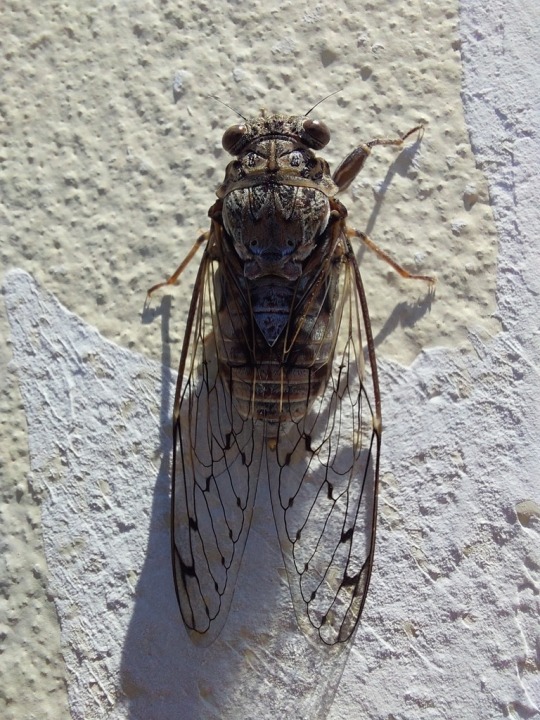

[images: left - the east aegean cicada; right - the ash cicada]
then, I decided to read a truly excessive number of scientific research papers about cicadas in the mediterranean. why did I do this? besides reasons of entomology-associated passion (and legitimate professional interest), I did it because I learned that it turns out that basically, the aegean sea constitutes a “hot spot of cicada diversity,” with numerous species across different genera that nevertheless look—pretty much all the same! quite quickly, it became apparent that one blurry instagram image would be insufficient to determine the species. in fact, even if the image had been crystal clear, it wouldn’t have mattered. apparently, many cicadas of the eastern mediterranean are not morphologically distinct (meaning, again: some of them look identical) and what differentiates them is actually, primarily, their songs. they are “acoustically divergent,” with females being able to locate males of their own kind by their unique calls alone, not their looks. different species also tend to be distributed differently across this region, by which I mean some are only found on certain islands, or in certain areas of Italy, the Balkans, Greece, or Turkey, or Greece and Turkey, etc etc. I needed to read to form a better picture of all of this, essentially, and to gather clues.

[image: some of the papers I read]
after perusing all of this fascinating literature—and also squinting really hard at dnp’s picture and the photos of cicadas we had accumulated—I came to the conclusion that, most likely, the cicada was either Cicada orni, the ash cicada, or potentially more likely, Cicada mordoganensis, the east aegean cicada. both had three observations recorded in the region of interest (the most observations of any species), and both had the most similar coloration and patterning to dnp’s cicada. my predilection for the east aegean choice stemmed from two things: 1. the east aegean cicada observations were of a higher quality (research grade) than the ash cicada, and 2. the papers I had read were telling me that while east aegeans were prevalent along the entirety of the our region of interest, ash cicadas were more constrained, geographically, to northern Turkey and the Greek mainland. in fact, according to mediterranean cicada scientists, no ash cicadas had ever been found on islands as southeast as Samos and Ikaria, two islands relatively close to the peninsula where dnp’s cicada resides. this contradicted the observations on iNaturalist.
apparently, this difference in distribution has a lot to do with the tectonic and geographical history of the eastern mediterranean. where certain cicadas are today has a lot to do with where warm refuges from ancient glaciers existed thousands and millions of years ago (cicadas like the heat). also, and I should not necessarily subject you to this tangent, but did you know that about 5 million years ago the mediterranean sea simply gave up on existence for a little while? ... during the Messinian Salinity Crisis, the mediterranean simply stopped being a sea for a little while and almost dried up completely, allowing certain creatures that could not otherwise traverse an entire sea to disperse across it, except for where there is a huge ass canyon in the seafloor, and—



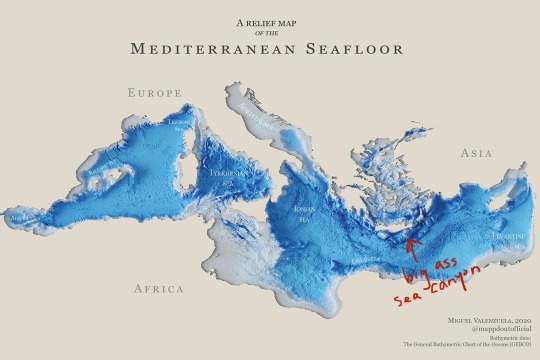
[images: highlighted, pertinent sections of papers discussing cicada distribution; relief map of the mediterranean seafloor]
anyway, what we were sorely missing at this stage were sound recordings of the cicadas. despite the evidence against the ash cicada, this cicada is still one of the most commonly found cicadas around the aegean sea. also, some of the studies I found were ten or more years old—who knows how climate change or other factors may have impacted the location of cicada populations since they were published.
while the audio of the cicadas outside in Phil’s video is poor, Dan does an imitation at 00:30 of what they’d been hearing during their trip. knowing Dan, this imitation is not merely a made-up, vaguely cicada-like noise, but an actually good approximation of the song that had been driving them crazy (this whole study mayhaps hinges on this lmao). if only we could uncover audio of these cicadas, maybe we could know for sure if this insect was of the ash or east aegean variety.
thankfully, at this point I was still reading papers. even more thankfully, the ten individuals who seemed to have cornered the market on mediterranean cicada studies since the 1970s made a website, and mentioned it in one of their papers. it is an exceptional, beautifully designed website called cicadasong.eu that evokes the ad-free, uncluttered, cozy and homemade feeling of the early noughties internet. it almost made me cry, and @/pierogish reported that seeing this website made her realize that in all these years recently spent online she had been choking, and only on cicadasong.eu was she finally able to breathe freely. on this website, there happen to be embedded YouTube videos of high quality audio recordings of all the european cicadas its creators have ever studied.
at last! comparisons of cicada songs to Dan commenced, and we were able to play the ash cicada’s sound alongside the east aegean’s and Dan’s. at the top of this post, you will find the compilation of these three sounds. here are the links to the original audio videos of the east aegean and ash cicada.
the main unit of sound—the chirp—of a cicada’s song is known scientifically as an “echeme”. in these audio files, you can perceive that, for the east aegean cicada, the duration of the echeme is longer, meaning the number of echemes per second is lower. this rhythm, and in general the structure of the east aegean cicada’s song was, in comparison to the ash cicada’s, deemed to the ear of all the authors and contributors definitively more similar to dan’s cicada song. thus, this final piece of evidence seemed to complement the rest of our data and confirm our initial assumption of the cicada’s identity.
conclusion
accumulated data has lent support to our hypothesis that the cicadas suffusing the atmosphere of dip and pip’s holiday resort with their ebullient, lascivious songs were east aegean cicadas.
#dnp#my regularly scheduled science/animal-themed contribution to the community#dan and phil#cicadas#entomology#insects#bugs
227 notes
·
View notes
Text

[1708/10977] Brown babbler - Turdoides plebejus
Order: Passeriformes
Suborder: Passeri
Superfamily: Sylvioidea
Family: Leiothrichidae (laughingthrushes)
Photo credit: Thomas Holmberg via Macaulay Library
#birds#Brown babbler#Passeriformes#Passeri#Sylvioidea#Leiothrichidae#Turdoides#birds a to z#undescribed
211 notes
·
View notes
Text




Sneak peek at tiny sleepy butterfly +_+
Reverdin's blue (Plebejus argyrognomon)
#photographers on tumblr#my photography#original photographers#art#lensblr#photography#animal photography#insect photography#wildlife photography#macro photography#nature photography#flash photography#night photoshoot#nature#wildlife#naturecore#insect#insects#butterfly#butterflies#lycaenidae#bugblr#entomology#sleepy#angel#angelcore#so tiny#so precious#june 28 2024#no ai
37 notes
·
View notes
Text
A történet nem nagy ügy:
valaki egy BMW X5-ös személygépjárművel az Állami Operaház főbejáratánál parkolt. Kit érdekel? Hiszen megszoktuk már, hogy egy jobb BMW-vel az Ember bárhol parkolhat; keresztben a járdán, jogtalanul mozgássérült-parkolóhelyen, stb. Ez a jelenség szinte már-már gyári alapfelszereltségként tapad az említett márka imázsához. Viszont az "elkövető" személye, ha nemis vajszínű árnyalatot, de neon-narancssárga színt vetít a történetre, mely elénk tűnik a Nemzeti Együttműködés Rendszerének sötétszobájából az index.hu és a Magyar Narancs nyomán. A gépjárművezető ugyanis nem más volt, mint az ország elsőszámú dalszínházának Főigazgatójának a felesége, Máthé Zsuzsanna. Ez a "parkolás-gate" már sokadik állomása az Operaház körüli botránysorozatnak, tehát ez is indokolhatja, hogy a plebejus olvasóközönség, a plebs ne foglalkozzon ezzel a nem-üggyel.
De mégis talán érdekes lehet az, hogy az úrvezető hölgy a Szent István Intézet igazgatója. Tudtad? Én nem tudtam, hogy egyáltalán létezik ilyen intézet, ami egy nonprofit kft. Pedig fontos kutatásokat végez és alapos elemző tanulmányokat rendel meg, ezáltal a magyarországi politikai katolicizmus egyik fontos háttérbástyája, és feltehetőleg kifizetőhelye. Ha szeretnél Te is sorbaállni, eridj Budapestre a Sütő utca 2-be. Ugyanitt székel az Európa Szívében Alapítvány, amely finanszírozza a Szent István Intézet áldásos tevékenységét Hollik István kuratóriumi elnökkel tetézve. No de ki áll az Alapítvány mögött? A sokat gúnyolt mikrofinanszírozók tömege, avagy a CIA, vagy az ördögi Európai Unió? Hát nem. Lepődj meg: a Bethlen Gábor Alapkezelő Zrt., a Nemzeti Együttműködési Alap és a Miniszterelnökség.

2 notes
·
View notes
Text



7/29/2023
Mount Rainer
1. Long horned Beetle (evodinus monticola)
2. Bee mimicking flower fly (sericomyis chalcopyga)
3. Gossamer-winged butterfly - Boisduval's Blue (plebejus icarioides)
#mine#insects#flowers#mountain flowers#hoverfly#flower flies#beetles#pnw#pnw insects#Mount Rainier#purple#yellow#green#long horned beetle#gossamer winged butterfly#boisduvals blue#photography
3 notes
·
View notes
Photo
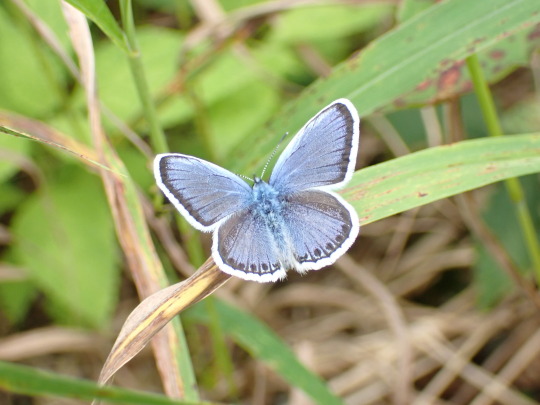
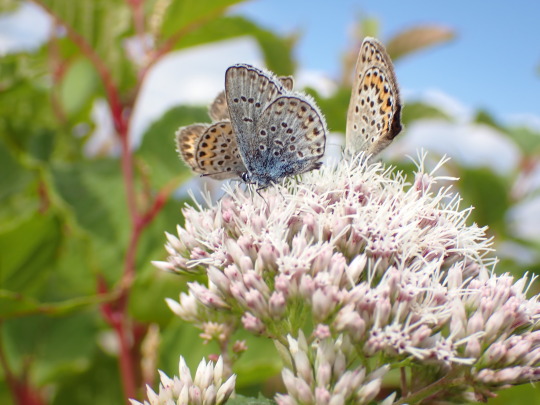
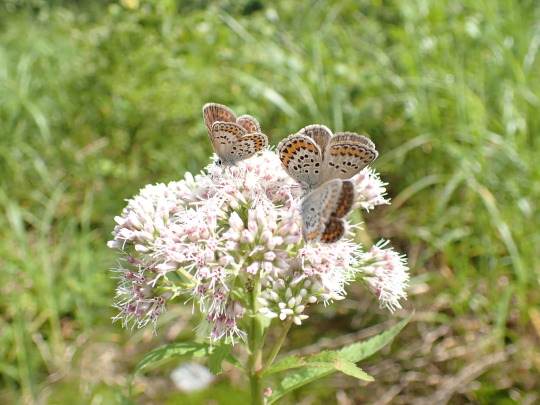

Plebejus argus micrargus ヒメシジミ 本州・九州亜種
2020, Japan
3 notes
·
View notes
Text

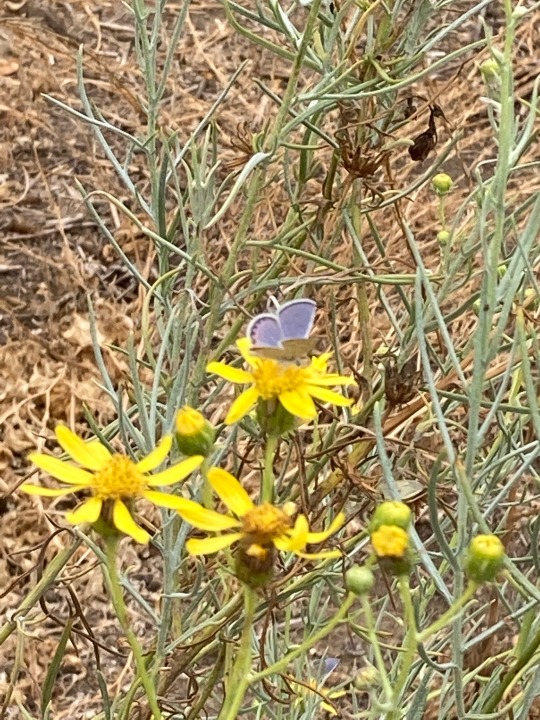





#blues#blue#gossamer butterflies#polyommatus icarus#plebejus#lepidoptera#insects#wildflowers#groundsel#daisies#senecio#toxic plants#sepulveda basin wildlife preserve#van nuys
4 notes
·
View notes
Photo

Female Karner Blue Butterfly (via USFWS Midwest Region)
Photo by Jill Utrup/USFWS.
#Karner Blue#Plebejus melissa samuelis#Plebejus melissa#Plebejus#Polyommatinae#Lycaenidae#Papilionoidea#Lepidoptera#Insecta#Hexapoda#Arthropoda#butterfly#insects#endangered#Necedah National Wildlife Refuge#Necedah NWR#Wisconsin
13 notes
·
View notes
Text

Reverdin's Blue, Plebejus argyrognomon Canon 400D EF 100 2.8 f/2.8 1/250 iso: 200 Srbsko, Czech Republic 6/67/2012
#Lycaenidae#lepidoptera#Butterflies#SaveButterflies#Macro#Insects#invertebrates#grasslands#insectphotography#macrophotography#insect#canon
24 notes
·
View notes